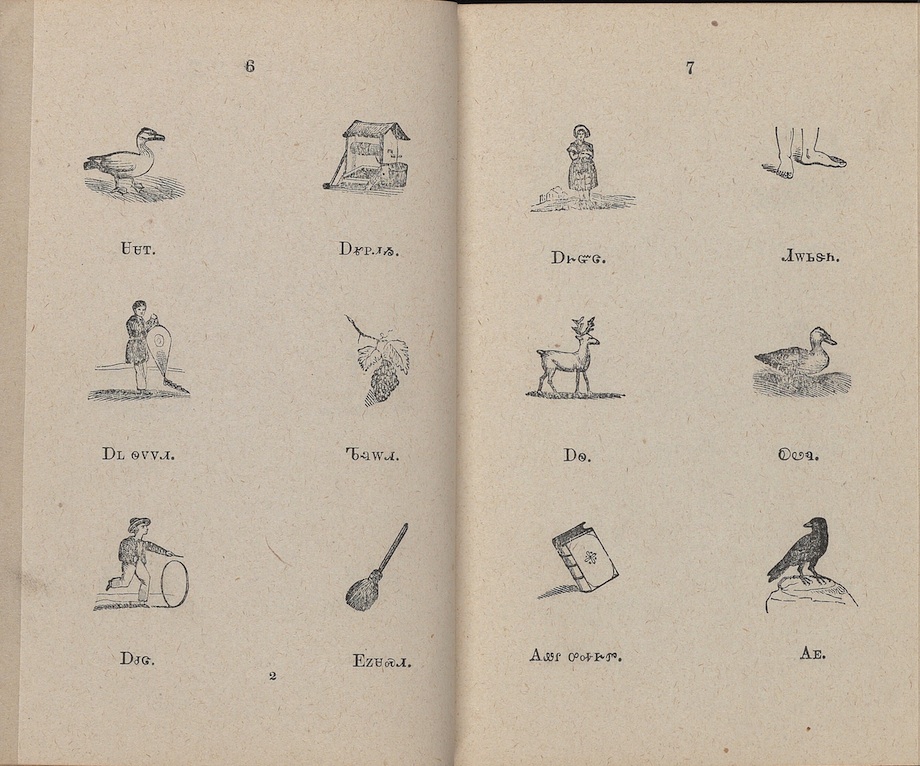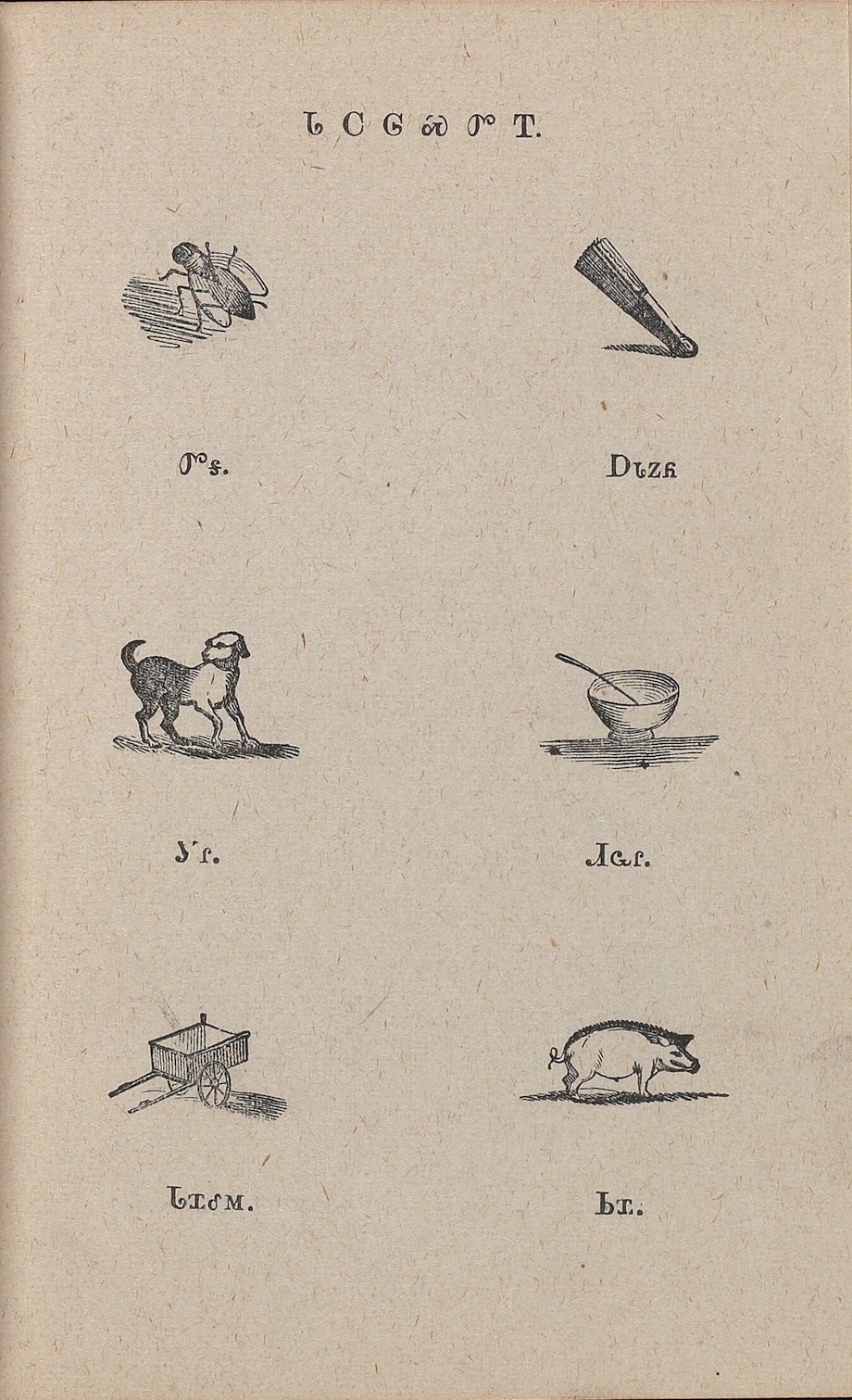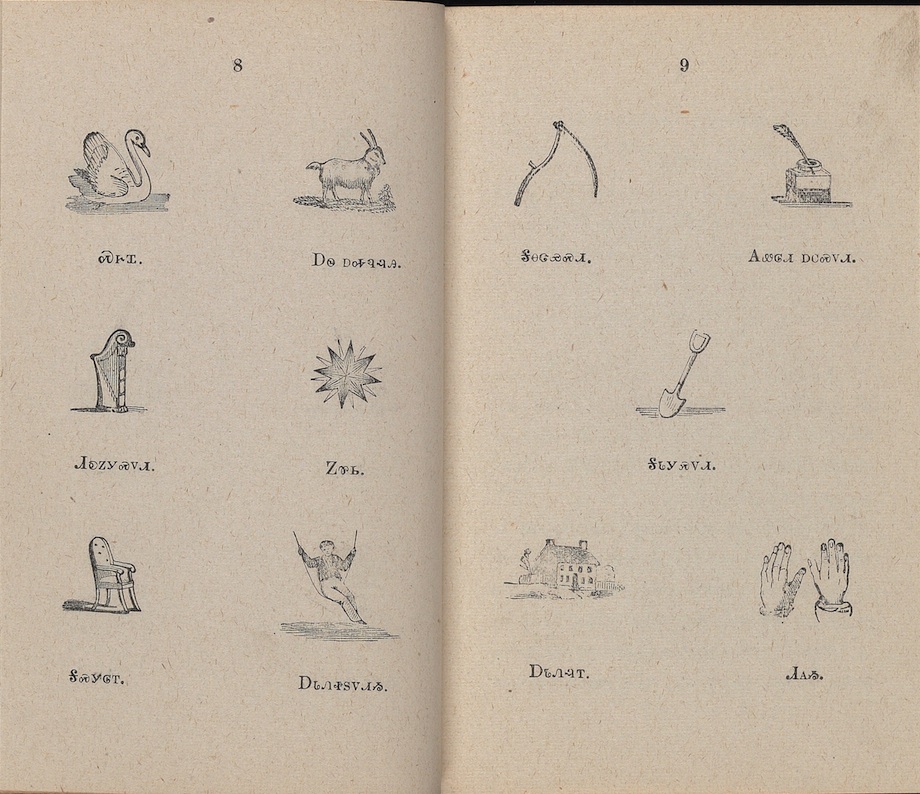Learn Cherokee Words for "Dog," "Harp," "Star," and More, Using An 1888 Primer
The Vault is Slate's history blog. Like us on Facebook, follow us on Twitter @slatevault, and find us on Tumblr. Find out more about what this space is all about here.
Yale’s Beinecke Rare Book and Manuscript Library recently digitized a number of nineteenth-century documents written and printed in Cherokee, as part of a new effort to catalog its thousands of Cherokee manuscripts and contribute to new initiatives in the language's instruction. Here are five pages of a Cherokee Pictorial Book, compiled by Reverend A.N. Chamberlin, which also contains a catechism and hymns in Cherokee. The captions indicate translations and phonetic pronunciations. In the audio file at the end of this post, Tom Belt, who grew up speaking Cherokee as his first language, reads the vocabulary words in order.
Sequoyah, a trader, silversmith, and blacksmith, created the first Cherokee alphabet in 1821, after being interested for about a decade in the idea of devising a written form of Cherokee. The 85 characters of his syllabary represented the sounds of the language. (Later, the syllabary was edited, to make the characters easier to print.) This was the first written Native American language, and allowed the Cherokee to print newspapers and books, and to preserve tribal history in written form.
While some of the documents in the Beinecke’s collection, like this 1829 hymnal, were printed before the Cherokee “removal” from the Southeast to the Midwest in 1838-1839, this particular book dates to 1888, and was published in Oklahoma. A 1934 account of Reverend Chamberlin’s life records that he was a Presbyterian missionary who, in the course of his work, procured a printing press that used the modified version of Sequoyah’s syllabary. The text is designed to have appeal to both beginning and advanced Cherokee readers.
Many thanks to Hartwell Francis, director of the Cherokee Language Program at Western Carolina University, and to Lisa Conathan of the Beinecke, for their help.

R: "Ageyutsa": Girl. "Dilasideni": Feet. "Awi": Deer. "Kawonu": Duck. "Goweli uhagedv": Thick book, or Bible. "Kogv": Crow.
Beinecke Rare Book and Manuscript Library, Yale University.


